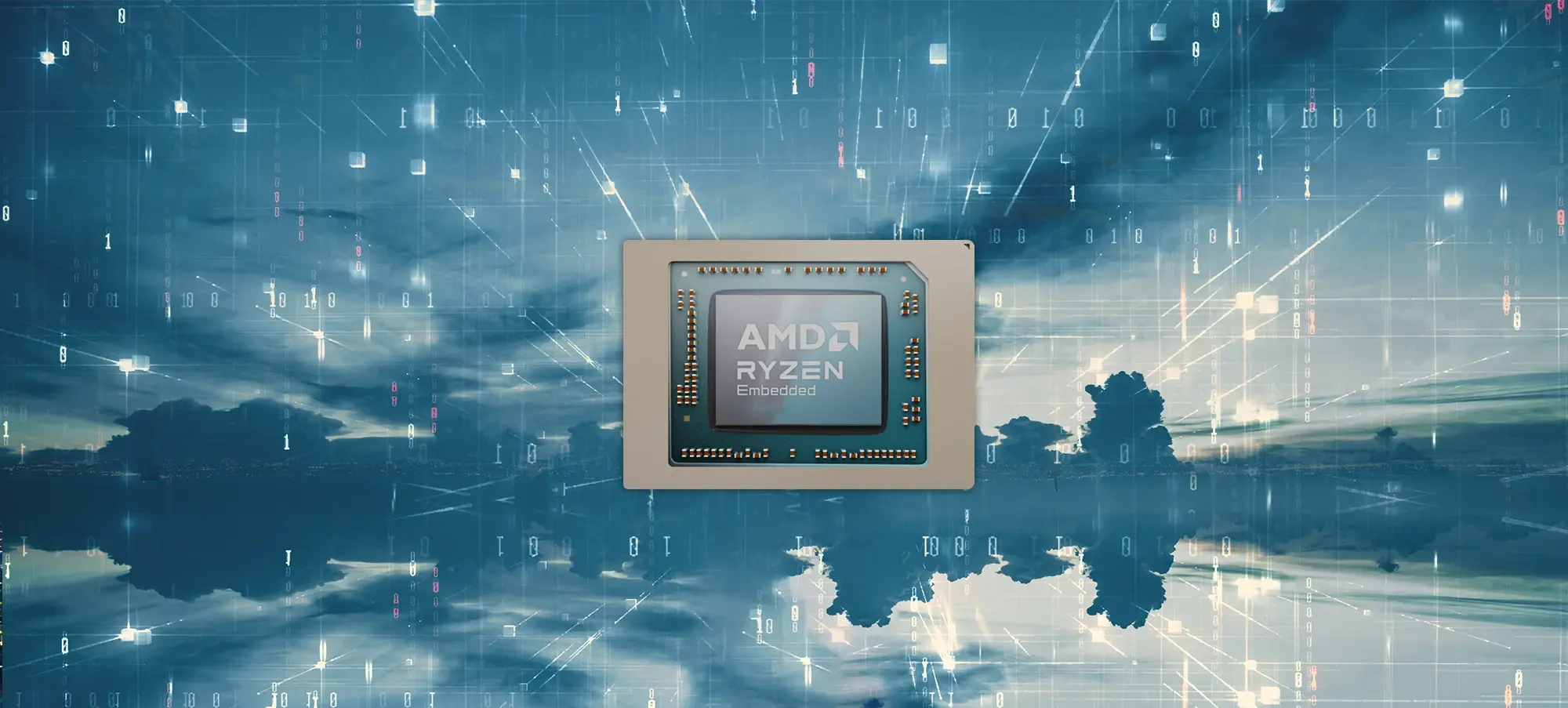“Little excitement about a lot”: The AMD Ryzen™ Embedded 8000 deserves more attention
The unfortunate reality of embedded systems is that they often go unnoticed. Yet these invisible heroes play a crucial role in enabling modern everyday life. They are integral to vending machines, cash register systems, and medical devices. Or hidden in ticket machines, traffic control systems, and ultra-modern industrial plants.
The new Ryzen Embedded 8000 from AMD shares this overlooked fate within the embedded community. As of today, it is an unsung hero. Yet it is poised to become the future brain behind many of these embedded systems. However, it hasn’t received the attention it deserves. AMD introduced it almost quietly and in passing – in a community blog post on April 2, 2024, shortly before Embedded World 2024. At the trade show, the new processor was barely noticeable; you had to know what to look for to spot a Ryzen Embedded 8000 at the AMD booth. Adding to the confusion, AMD presented a socketed Ryzen Embedded 8000 at the show, whereas only the BGA versions are listed on the product page. Yet, this processor is truly “the next big thing” for AMD.
Zen mode: strength grows out of (un)rest
As the successor to the popular AMD Ryzen Embedded V2000, the Ryzen Embedded 8000 naturally offers significant improvements. But that doesn’t make the AMD Ryzen Embedded V2000 obsolete. Quite the opposite! Launched four years ago, it is in its prime and will be available until at least 2030, according to AMD. However, the last four years have seen a lot of technological advancements. The V2000 features Zen 2 cores manufactured using the 7nm process, while the new Ryzen Embedded 8000 utilizes more advanced Zen 4 cores based on the efficient 4nm architecture. This ensures higher computing performance with the same power consumption. But there’s more, of course: keyword – AI at the edge.
Technology for the spotlight
A study by management consultants Accenture highlights the importance of AI-supported edge computing. It concludes that companies consistently using AI at the edge are four times more innovative, nine times more efficient, and almost seven times more cost-effective. And AI acceleration at the edge is precisely where the AMD Ryzen Embedded 8000 series, with its dedicated NPU, excels in. Based on the AMD XDNA™ architecture, it delivers up to 16 TOPs. Combined with the CPU and integrated GPU, the Ryzen Embedded 8000 offers up to 39 TOPs of AI performance, making it a crucial lever for innovation, efficiency, and productivity.
Perhaps the Ryzen Embedded 8000 will step out of its shadowy existence as a secret hero into the spotlight of embedded AI applications. However, I fear that while AI applications will gain recognition, the Ryzen Embedded 8000 will remain unsung as the enabler behind the scenes. And here we have it again: the parallel between embedded systems and the Ryzen Embedded 8000; both are and will remain silent heroes!
Bringing the hero into your application
This is a great pity because, in my opinion, the AMD Ryzen Embedded 8000 has everything needed for modern, powerful, and future-proof AI edge applications. It combines performance, energy efficiency, and the capability to handle complex AI tasks.
Hidden or not – a hero remains a hero. So, how can you bring this hero into your application? The Computer-on-Module concept can help, making it relatively easy to integrate the new Ryzen Embedded 8000 into both existing applications and new developments. If you are already using a COM Express Compact module, you only need to replace it with a new one featuring an AMD Ryzen Embedded 8000 processor. If you are not yet using Computer-on-Modules or are wondering what they are, I recommend this article. It provides all the information you need about the Computer-on-Module concept and its advantages.



